
RUSSIA
I am returning to my old routine of daily writing and posting on my BLOG after getting my breath back from a great trip to Russia. We were breathless not from all the traveling but from trying to take in all that is happening in the new Russia. At the beginning of our trip with friends Bill and Ruth DeRisi, Margaret and I spent five very busy days in St. Petersburg, a place which always reminds me that the human spirit, as Faulkner was fond of saying, is indomitable. I kept remembering his words from the Nobel Prize acceptance speech:
“I decline to accept the end of man. It is easy enough to say that man is immortal because he will endure: that when the last ding-dong of doom has clanged and faded from the last worthless rock hanging tideless in the last red and dying evening, that even then there will still be one more sound: that of his puny inexhaustible voice, still talking. I believe that man will not merely endure: he will prevail. He is immortal, not because he alone among creatures has an inexhaustible voice, but because he has a soul, a spirit capable of compassion and sacrifice and endurance. The poet’s, the writer’s, duty is to write about these things...”

The inexhaustible people of St. Petersburg and indeed of all of Russia have gone through hell and have come back again and again determined to prevail. I am in awe of them. The canon of Russian literature includes the work of writers who have confirmed for at least three centuries that Faulkner was right; and Russians, much more than Americans have done, have erected monuments to their poets and writers acknowledging that literature reveals and preserves the soul of a nation. Russian composers have written an extraordinary sound track for all that literature; artists and choreographers have provided the movements and backdrops; ordinary people have been the heroes. Many monuments to Soviet politicians have been removed, but not one statue of a Russian writer, composer, or artist has been removed since 1991. Gorky Street in Moscow has been changed back to its old name, Tverskaya Ulitsa; but Gorky Park remains.
FRONT ENTRANCE TO THE SUMMER PALACE IN PUSHKIN
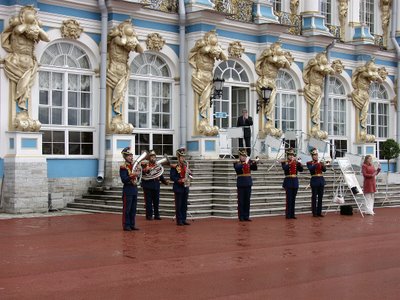
CASCADE AT PETERHOF

MOIKA CANAL, ONE OF MANY IN THIS VENICE OF THE NORTH

PETER AND PAUL FORTRESS WITH PETER AND PAUL CATHEDRAL

PALACE SQUARE (DVORTSOVAYA PLOSCHAD)

ON THE RIVER WITH THE M/S NIKOLAY CHERNYSHEVSKY

After St. Petersburg we spent a week getting down to Moscow on a riverboat. While Russian landscapes are wonderful, the people are the most remarkable treasure of that country. I know only a little Russian so I can’t engage in philosophical discussions in that language, but I know enough to hear in Russian voices unmistakable dismay that our American democracy is being threatened by poor leadership. They know about poor leadership.
MANDROGI VILLAGE

President Vladmir Putin owns a home at Mandrogi, a new village not far from St. Petersburg. This new village has been developed since 1996 and has become a favorite vacation spot for Russian families. Artists and craftspeople have come from all over Russia to live and work there.
 Most Russians, including young people, love their country's traditional customs, arts and crafts, and costumes; but they are also drawn to high fashion and contemporary Western music and arts. Young people working on the ship may prefer Levis or stilleto heels when they're out on the town in Moscow or St. Petersburg, but they look terrific in traditional Russian dress. Unfortunately, many young men and women are smoking because they say it is fashionable to do so.
Most Russians, including young people, love their country's traditional customs, arts and crafts, and costumes; but they are also drawn to high fashion and contemporary Western music and arts. Young people working on the ship may prefer Levis or stilleto heels when they're out on the town in Moscow or St. Petersburg, but they look terrific in traditional Russian dress. Unfortunately, many young men and women are smoking because they say it is fashionable to do so.SIDEWALK DRAWING IN PETROZAVODSK: Click on this one to see it larger and you'll see what I imagine to be a little Russian girl's dreams. Of course, when she is grown up she will have red hair.

KIZHI ISLAND, A GLIMPSE OF OLD RUSSIA IN LAKE ONEGA
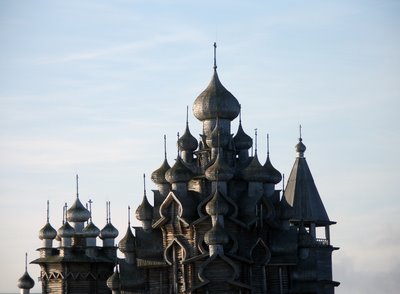
Tranfiguration Cathedral, a UNESCO World Heritage Site, was built without the use of nails in 1714. People on the island say the church was built by one man using only an ax for a tool. Although it is almost certainly not true, the story has become a popular legend. Regardless of the number of original workmen, the buildings in the little cluster are beautifully exotic. The shingles, made of aspen wood, seem to change color as light changes throughout the day.

SIXTEENTH AND SEVENTEENTH CENTURY MONASTERIES AND CONVENTS have been returned to the Russian Orthodox Church. During the Soviet period most of those in the country were used as warehouses. In the cities most churches were either destroyed or used as warehouses. A few of the most beatiful were used as museums.


LOOKING UP IN THE UGLICH TRANSFIGURATION CATHEDRAL
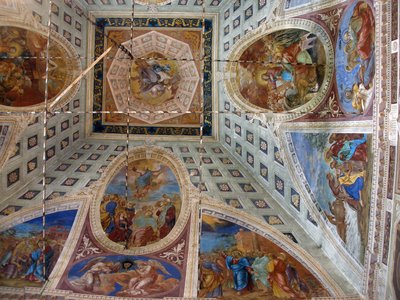
WE HAD THE GOOD FORTUNE on this trip to become acquainted with several wonderful fellow-travelers. Lee Ann and Bob Duver live in Lawrence, Kansas. Alex and Grace Dong live in Hillsboro, California.


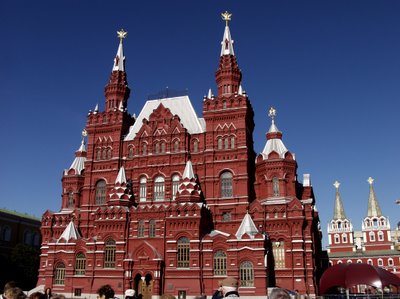
The landmarks of Moscow are easily recognized all over the world. With Lenin's mausoleum and the Kremlin on one side and GUM department store (now a modern shopping mall) on the other, and with the State Historical Museum and St. Basil's Cathedral on opposite ends, Red Square is the famous center piece of the city.
MARGARET IN RED SQUARE


ST. BASIL'S CATHEDRAL

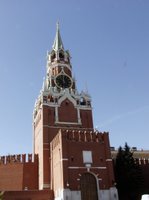
TOWERS AND SPIRES surround Red Square and church steeples and domes cluster together in the Kremlin. Of course, the Red star still shines and the occasional hammer and sickle clings to a wall; but people are obviously glad to have the Orthodox cross back everywhere in Russia.

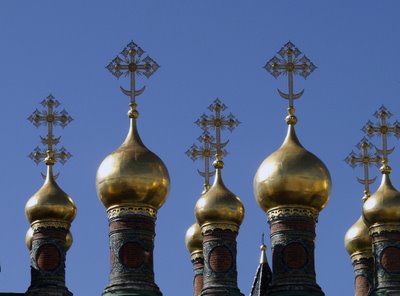

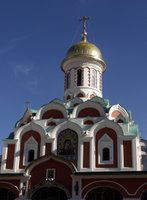 The church on the right is a new one in Red Square, an exact replica of the one blown up by the Soviets in 1932. The worst damage done to Russia during those bad times was done to people. In the unjust war my country is now waging in Iraq, the worst damage is not the destruction of places but the inexcusable deaths and scarring of many thousands of innocent people. As a citizen of the world, I am outraged. As an American, I am embarrassed and ashamed. It sometimes take awhile, but history eventually recognizes and acknowledges such crimes and the criminals who commit them.
The church on the right is a new one in Red Square, an exact replica of the one blown up by the Soviets in 1932. The worst damage done to Russia during those bad times was done to people. In the unjust war my country is now waging in Iraq, the worst damage is not the destruction of places but the inexcusable deaths and scarring of many thousands of innocent people. As a citizen of the world, I am outraged. As an American, I am embarrassed and ashamed. It sometimes take awhile, but history eventually recognizes and acknowledges such crimes and the criminals who commit them.MOSCOW SUBWAY
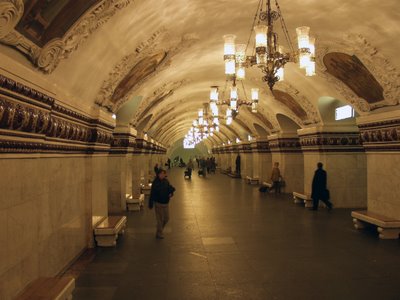

Perhaps the highlight of the trip for me was reunion with friends from Smolensk. Anton and his friend Marina and Anton's Mother Yelena came on the midnight train from Smolensk to be with us in Moscow.


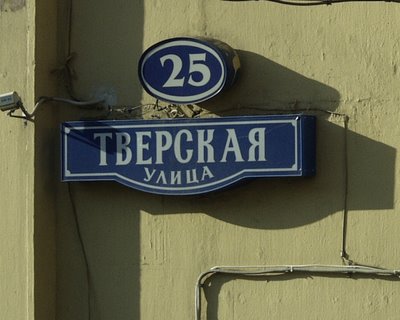
1 comment:
Looks like you had a wonderful trip!
Post a Comment